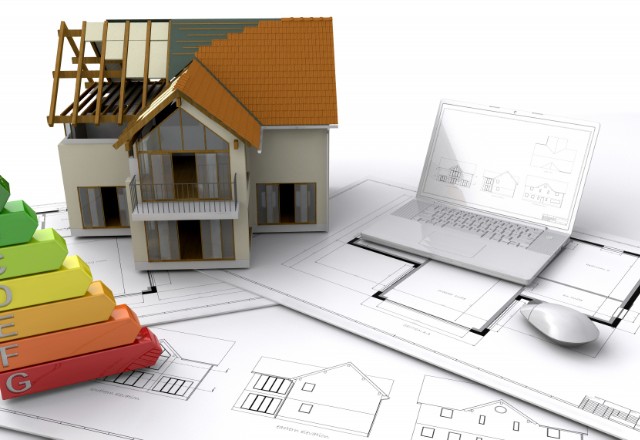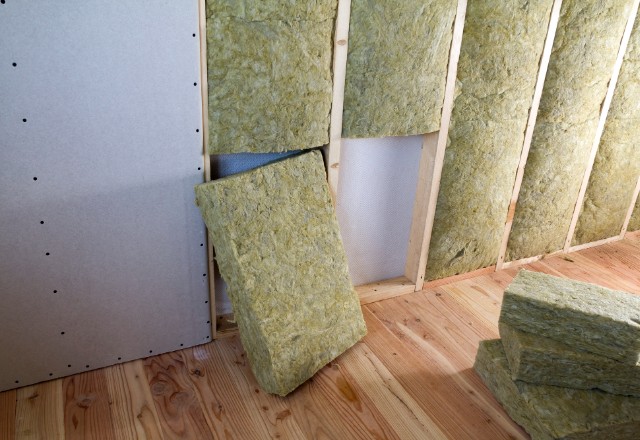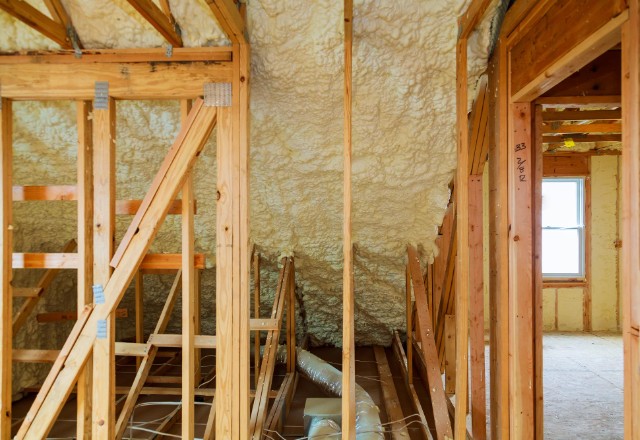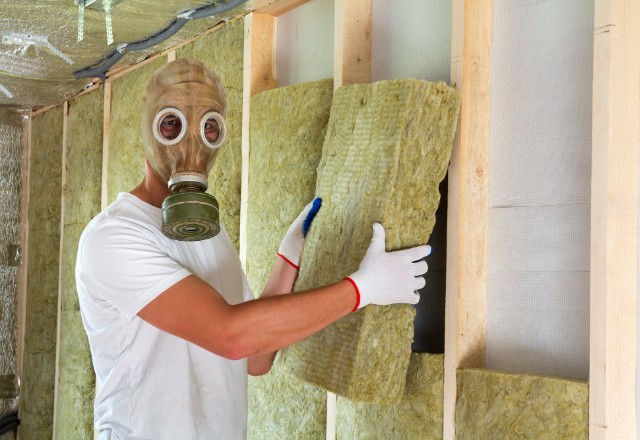Attic insulation refers to the material used to insulate the attics of a building. Its main purpose is to regulate the temperature of the attic space, which in turn affects the temperature of the entire living space. This insulation, when properly installed, can significantly reduce energy loss, improve energy efficiency, and lower utility bills. Different types of attic insulation exist, each with its pros and cons with respect to cost, installation process, thermal performance, and energy savings.
Contact Advance Roofing LLC for attic, roof, wall or basement insulation
Call us (509)201-4190 or send the form
Disclaimer: This article is intended to provide general information and does not replace professional advice. For further guidance on attic insulation, we recommend seeking the help of a qualified insulation specialist, such as Advance Roofing LLC, who can assist with assessing the unique details of your home’s attic space and recommending the best type of insulation for your needs. Advance Roofing LLC has been proudly offering expert roofing solutions to homeowners in Spokane, WA for many years with the highest standards of quality.
Types of attic insulation
When choosing attic insulation, there are several types of insulation available in the market. The most commonly used attic insulation types are blown-in cellulose insulation, fiberglass batt insulation, and insulation spray foam. Each type has its own advantages and disadvantages that should be considered before making a decision.
Blown-in cellulose insulation is a popular type of attic insulation that consists of ground-up recycled newspaper treated with fire-resistant chemicals. It is a very effective insulator because it fills any gaps or spaces in the attic. Blown-in cellulose insulation is also eco-friendly and affordable. However, it should be noted that it can settle over time, reducing its thermal performance.
Fiberglass insulation is another common type of attic insulation that comes in batts or rolls. It is made of glass fibers and is also available in blown-in form. It is known for its thermal performance and ability to reduce energy bills. However, fiberglass insulation can pose some health risks if it is not properly installed and can be itchy and uncomfortable to install. It is also known for its poor air sealing qualities.
Insulation spray foam is a newer type of insulation that becomes more and more popular. It consists of a combination of polyurethane and a foaming agent that expands rapidly when sprayed. It creates an air barrier and is extremely effective in reducing energy costs, air leakage, and preventing mold growth. It is also easy to apply and can fit into any space. However, spray foam insulation can be expensive and require professional installation.
In terms of R-value, a measure of thermal resistance, blown-in cellulose insulation has an R-value of 3.2 to 3.8 per inch, fiberglass insulation has an R-value of 2.2 to 4.3 per inch, and insulation spray foam has an R-value of 6.0 to 7.0 per inch.
Energy Efficiency

Energy efficiency is becoming increasingly important in today’s world as people look for ways to save on energy costs and reduce their carbon footprint. One of the most effective ways to improve energy efficiency is by properly insulating homes, especially attics where heat can easily escape. There are various types of attic insulation available, each with its own pros and cons when it comes to energy efficiency.
Factors that affect energy efficiency in attic insulation
Attic insulation is crucial for maintaining a comfortable indoor temperature and reducing energy costs in your home. However, several factors can affect the energy efficiency of your attic insulation.
- For instance, air infiltration can severely impact your insulation’s thermal performance. Air leakage can allow heat to escape during winter months and hot air to enter your house in the summer, making your HVAC system work harder and increasing energy bills.
- Another factor to consider is insulation materials. Fiberglass batts, blown-in cellulose insulation, and spray foam insulation are common types used for attics. Each has different characteristics, advantages, and disadvantages. For example, fiberglass batts are affordable and easy to install, but they may not provide effective air sealing. Blown-in cellulose insulation is often made of recycled materials and can reduce air infiltration, but it may settle over time. Spray foam insulation can provide an air barrier, but it is more expensive than other alternatives.
- The R-value of insulation is a crucial factor in determining its resistance to heat flow. A higher R-value indicates better insulation, resulting in increased energy savings. The amount of insulation you install is also critical. Insufficient insulation cannot provide the desired level of thermal resistance and, therefore, does not reduce energy bills.
To maximize energy efficiency and reduce energy bills, homeowners should consider eliminating air infiltration, selecting the appropriate insulation materials, verifying the insulation’s R-value, and ensuring the correct installation amount. By considering these factors, homeowners can create an effective insulation envelope that provides the necessary level of thermal resistance without undermining indoor air quality.
Benefits of energy efficient attic insulation
Energy efficient attic insulation can provide numerous benefits for homeowners. Not only can it save money on energy bills, but it can also improve indoor air quality and reduce the overall carbon footprint. By properly insulating your attic, you can maintain a comfortable temperature all year round, prevent heat loss in the winter and heat gain in the summer, and reduce air leakage and infiltration.
- One of the main benefits of energy efficient attic insulation is the potential for energy savings. Because a well-insulated attic can prevent heat from escaping during the winter and entering during the summer, your HVAC system won’t have to work as hard to maintain a comfortable indoor temperature. This can result in lower energy bills and significant savings over time.
- In addition to energy savings, proper attic insulation can also improve indoor air quality. Often, attics are a source of air infiltration, which can allow for the entry of allergens, pollutants, and other contaminants into the home. By creating an air barrier with insulation, you can prevent the infiltration of these contaminants and improve overall indoor air quality.
- Comfort is another benefit of energy efficient attic insulation. By preventing heat loss in the winter and heat gain in the summer, you can maintain a more consistent temperature throughout your home. This can lead to a more comfortable living space and less reliance on heating and cooling systems.
- Proper insulation can also help create an air barrier, which is a critical component of energy efficiency. An air barrier is a continuous layer of material that helps prevent air infiltration, reducing the need for heating and cooling systems to work harder. By creating an air barrier with insulation, you can help keep conditioned air inside your home and unconditioned air outside.
- Finally, energy efficient attic insulation can also help reduce your carbon footprint. By reducing the amount of energy needed to maintain a comfortable indoor temperature, you can reduce your overall energy consumption and contribute to a more sustainable future.
Common Types of Attic Insulation
Attic insulation is a vital component of a properly functioning home. It helps regulate temperature, reduce energy bills, and improve indoor air quality. There are three common types of attic insulation – blown-in cellulose insulation, fiberglass batt insulation, and insulation spray foam – each with its own unique benefits and drawbacks.
Fiberglass Batts

Fiberglass batts are a common type of insulation material used in many homes to improve energy efficiency and reduce energy costs. These batts are made of glass fibers and are designed to fit snugly between wall studs, floor joists or attic rafters.
Fiberglass batt insulation comes in pre-cut panels or rolls, and its installation process is relatively easy. Homeowners and contractors can install it themselves as a DIY project or engage professionals. It’s essential to take careful measurements before installing fiberglass batts to maximize its effectiveness.
Fiberglass batts work best in attics where there is ample space to maneuver. It is vital to seal all holes, gaps, or vents to prevent air infiltration and improve the insulation’s thermal performance. In addition, fiberglass batts work efficiently in interior walls, especially those that don’t require soundproofing.
- The advantages of using fiberglass batts for insulation purposes include its affordability, low installation costs, and availability.
- Fiberglass batt insulation is also made from recycled materials, making it an eco-friendly option.
- Additionally, it provides satisfactory insulation to reduce energy bills, making it ideal for most homeowners.
However, there are also a few disadvantages of using fiberglass batts. One of the most significant drawbacks is the risk of mold growth. If moisture gets into the insulation material, it may encourage the development of mold. Because fiberglass batts are not air barriers, they do not prevent air leakage, making them less effective than other insulation types.
Comparing the effectiveness of fiberglass batts in comparison to other types of insulation, their thermal performance is average. While they are less effective than spray foam insulation, they are more cost-effective and still provide adequate insulation in most homes.
Blown-In Insulation
Blown-in insulation, also known as loose-fill insulation, is an excellent option for attics and irregularly shaped areas where other types of insulation may not fit properly. This type of insulation is installed using specialized equipment that blows small pieces of insulation material into the intended space, filling every nook and cranny.
- One of the biggest advantages of blown-in insulation is its ability to reduce air leakage, increasing energy efficiency and lowering energy costs.
- Additionally, most manufacturers use recycled materials to create this insulation, making it an environmentally responsible choice.
The installation process for blown-in insulation is relatively straightforward. First, any existing insulation must be removed, and the space must be cleared and cleaned. Next, the insulation material is loaded into a specialized machine that blows it into the space at a high velocity. The small pieces of insulation fill all the gaps, creating an insulating layer that is both effective and efficient.
While blown-in insulation provides good coverage and is cost-effective, there are some downsides to consider. One potential issue is settling over time if the insulation is not installed correctly. This can reduce its effectiveness and require additional insulation in the future. Additionally, because it is installed by blowing the insulation into the space, it can be challenging to control the distribution of insulation material, leading to uneven coverage.
To ensure that blown-in insulation is installed correctly, it is crucial to hire a professional insulation contractor with experience in blown-in insulation installation. This ensures proper sealing of spaces and prevents moisture buildup that can cause mold growth or other damage.
Cellulose Insulation
Cellulose insulation is another type of attic insulation that is commonly used in homes. It is made from plant fibers that are processed into insulation material. Cellulose insulation can be used in wall and roof cavities to insulate, draught proof, and reduce noise.
- One of the key benefits of cellulose insulation is its low-thermal conductivity, which means that it is a highly effective insulator.
- Additionally, most cellulose insulation is made from recycled content, making it an environmentally friendly choice.
- Compared to other furnace-produced mineral insulation like fiberglass, cellulose insulation has a lower embodied energy.
Cellulose insulation has also gained popularity as a fire retardant because its denser composition restricts the oxygen necessary to burn structural members. This makes it a safer option for insulating your home.
Various cellulosic materials can be used to create cellulose insulation, including recycled newspaper, cardboard, cotton, straw, sawdust, hemp, and corncob. These materials are processed and treated to make them resistant to fire, pests, and moisture.
Overall, cellulose insulation is a great option for efficient attic insulation. Its low-thermal conductivity, recycled content, and fire retardant properties make it a desirable choice for homeowners looking to improve energy efficiency and safety in their homes.
Spray Foam Insulation

Spray foam insulation is an insulation type that is applied using specific equipment. It consists of a two-part mixture that is sprayed onto a surface and expands to form a smooth insulation barrier. This insulation type has become increasingly popular due to its superior thermal resistance and versatility in application.
Pros of Spray Foam Insulation:
- Superior Insulation Properties – Spray foam is an excellent thermal insulator due to its ability to tightly seal and fill gaps. It has a high R-value, which means it provides better insulation than other types of insulation such as fiberglass batts.
- Versatility – Spray foam insulation can be used in a variety of applications, such as on walls, roofs, and crawl spaces. It can also be used in unconventional areas, such as around pipes or vents.
- Air Barrier – Spray foam creates an air barrier, preventing air infiltration and increasing energy efficiency by reducing heat loss.
Cons of Spray Foam Insulation:
- Higher Cost – Spray foam insulation is more expensive than other types of insulation due to the specialized equipment and materials required for application.
- Proffesional Help Required – For proper application and safety, it is recommended that spray foam insulation be installed by an experienced professional.
- Curing Time – Spray foam insulation requires a curing time before it is completely set and can be covered. It is important to note that during this time, there may be restrictions on the use of the building or area being insulated.
In addition, it is important to note that during the application of spray foam insulation, the curing process involves the release of chemicals. This means that occupants of the building or area being insulated may need to vacate during the application process.
Installation Considerations & Tips

Before installing any type of attic insulation, there are several important considerations and tips to keep in mind. Proper installation is crucial for ensuring maximum energy efficiency and avoiding issues such as mold growth and air infiltration. By following these guidelines, homeowners can achieve optimum thermal performance and energy savings while maintaining the indoor air quality and overall comfort of their homes.
The importance of professional installation for attic insulation projects

Attic insulation is a crucial element in maintaining energy efficiency and reducing energy bills. But the installation process is equally important, and it must be done correctly to achieve optimal results. This is where professional installation comes into play.
Professional installation offers a range of advantages over handling the insulation project yourself or trusting someone without the necessary qualifications.
- A licensed and experienced insulation installer has the expertise to handle insulation materials safely, minimize air infiltration and leakage, and install insulation to meet the manufacturer’s recommendations.
- Professional installers also have access to tools and equipment designed for insulation installation, ensuring the job is done efficiently and effectively.
- A professional insulation installer possesses specific qualifications that ensure a successful insulation project.
- A licensed and insured installer has the credentials that show they meet industry standards and have the experience and training necessary to complete the job to code.
- Properly licensed installers also have passed written and practical exams testing their knowledge of insulation installation and calculation of insulation needs.
- Ultimately, a professional installer understands the importance of conducting an assessment aimed at evaluating the attic’s specifics and unique conditions. Depending on the attic’s size and use, they can appropriately quantify the amount and type of insulation needed to maintain the optimal thermal performance inside the home.
Improper installation can lead to significant issues, including air leakage, thermal bridging, mold growth, and other air quality concerns. Insufficiencies in the insulation can result in heat loss that may reduce the overall energy efficiency of your home. Furthermore, improperly installed insulation can create conditions for moisture buildup and mold growth, which can lead to expensive and time-consuming remediation.
Conclusion
In conclusion, selecting the appropriate type of attic insulation is vital in ensuring energy efficiency and a comfortable living environment inside your home. Blown-in cellulose insulation, fiberglass batt insulation, and insulation spray foam are all common types with their unique pros and cons. It is crucial to keep in mind specific factors like budget, climate, and needs before making a decision.
Professional installation is pivotal to ensure that insulation is appropriately installed to code and reduce the risk of potential air leakage, thermal bridging, mold growth, and other air quality concerns. By choosing a licensed and experienced insulation installer, you can rest assured that the insulation project will be done safely, efficiently, and effectively to meet the manufacturer’s recommendations.



 509-201-4190
509-201-4190
